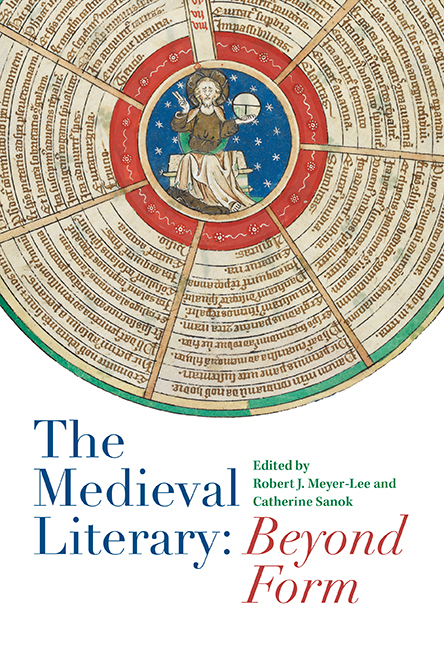Book contents
- Frontmatter
- Contents
- List of Illustrations
- Acknowledgments
- List of Contributors
- List of Abbreviations
- Introduction: The Literary through – or beyond? – Form
- I Instrumental Forms
- 1 What's the Use? Marian Miracles and the Workings of the Literary
- 2 Form's Practice: Lyrics, Grammars, and the Medieval Idea of the Literary
- 3 Forms of the Hours in Late Medieval England
- II Form Performed
- III Temporalities of Form
- Index
3 - Forms of the Hours in Late Medieval England
from I - Instrumental Forms
Published online by Cambridge University Press: 12 October 2019
- Frontmatter
- Contents
- List of Illustrations
- Acknowledgments
- List of Contributors
- List of Abbreviations
- Introduction: The Literary through – or beyond? – Form
- I Instrumental Forms
- 1 What's the Use? Marian Miracles and the Workings of the Literary
- 2 Form's Practice: Lyrics, Grammars, and the Medieval Idea of the Literary
- 3 Forms of the Hours in Late Medieval England
- II Form Performed
- III Temporalities of Form
- Index
Summary
The delineation of literary language as against all other kinds is always difficult, and even more so when the historical context of medieval literature presents a landscape so different from what is familiar in the modern period. One of the goals of recent medieval literary histories has been to widen a more limited understanding of what literature can look like, including under the banner of “the literary” some texts that are recognizable in familiar aesthetic terms – highly patterned language, artful detail, complexity, subtlety, susceptibility to interpretation, and so forth – but also some that are less so, such as the instrumental, practical texts that have come more and more to seem a significant and rewarding aspect of medieval literary production. As the textual objects worthy of scholarly scrutiny have begun to include not only poems of a certain rarefied kind, but also works that might earlier have been dismissed as routinely didactic, exemplary, or prescriptive, the materials available for medieval literary study have been radically expanded. As a matter of definition, this expansion has restored “the literary” to its roots in “the literate” – that is, anything written rather than spoken has become legible as a part of literary culture in this broadest sense. And so one might wonder whether the category, as an aesthetic one, continues to hold much interest.
But if “the literary” is an aesthetic category so fluid and so general as to be almost unsusceptible of definition, it is yet one that operates, frequently unacknowledged, as a template for readers’ expectations, shaping their interpretative encounters with textual objects. Operative conceptions of the literary, in both modern and medieval contexts, often seek to highlight the formal qualities of language as opposed to its propositional content, focusing on the aesthetic as the opposite of the utilitarian, for example, or on practices of reading that go beyond mere information-seeking. Instead of emphasizing the matter to be communicated, literary language dwells on the means of its communication, celebrating structure, ornament, even excess. And yet there is a revealing paradox here: for just as the conventionality of forms defines some written productions as literary (e.g., in the persistence of historical forms such as the sonnet), it also precisely excludes others from that category (e.g., in the “formulaic” verses of a greeting card).
- Type
- Chapter
- Information
- The Medieval Literary: Beyond Form , pp. 61 - 84Publisher: Boydell & BrewerPrint publication year: 2018



